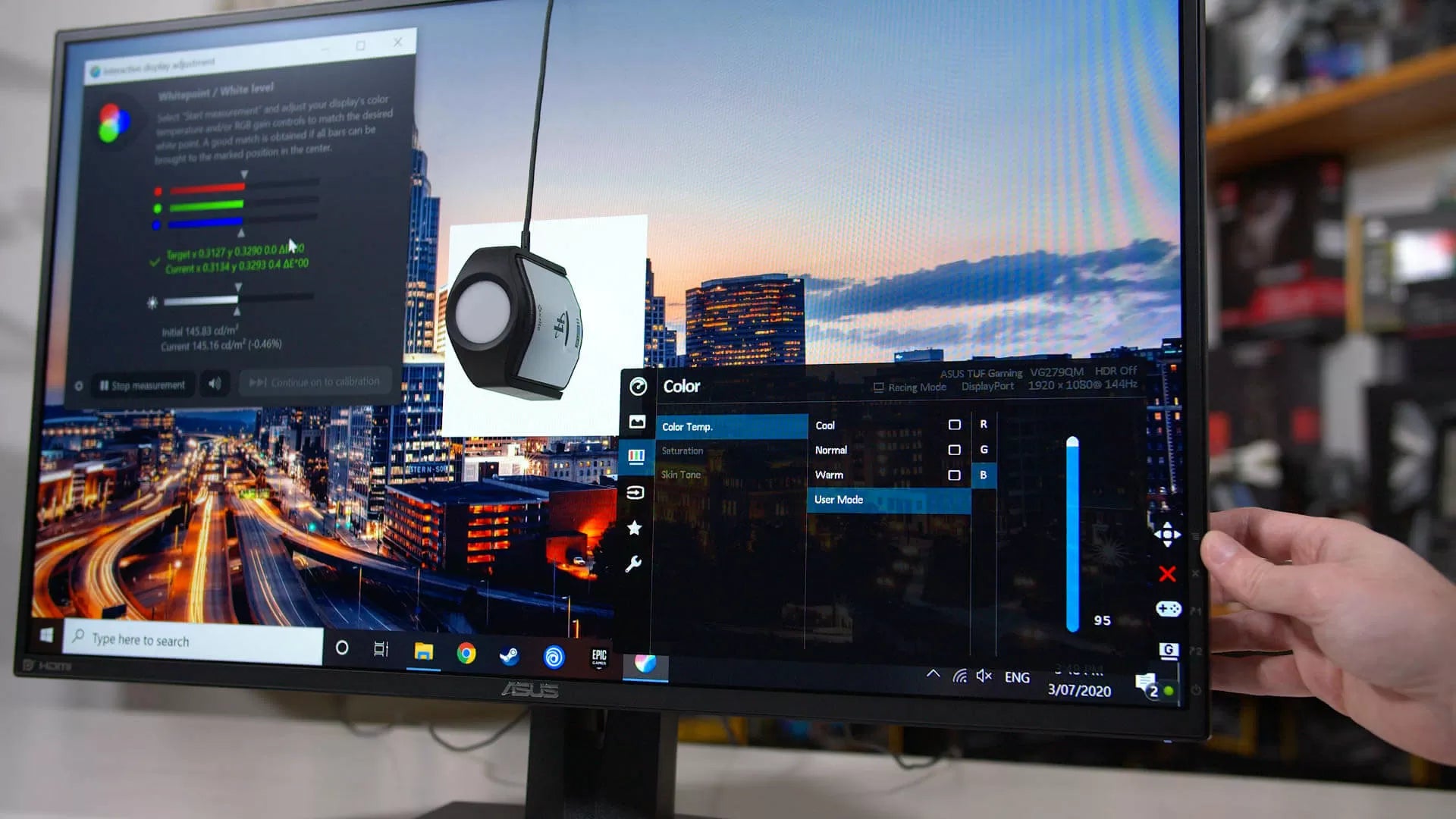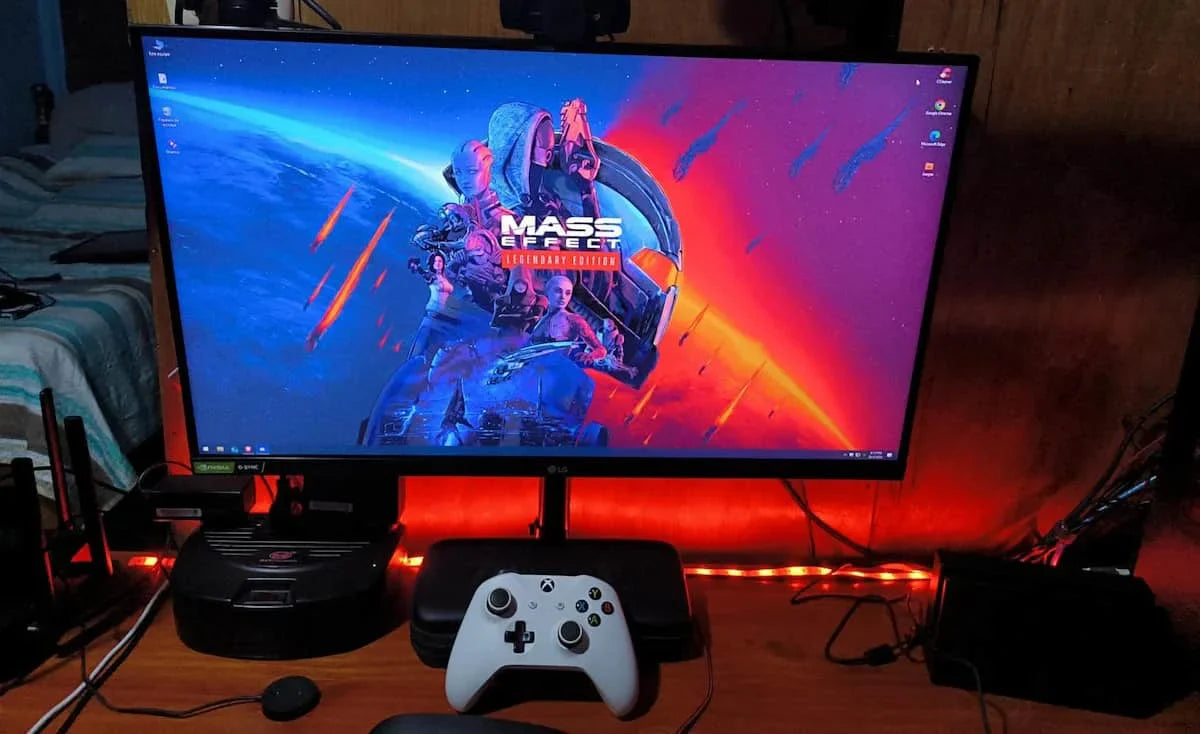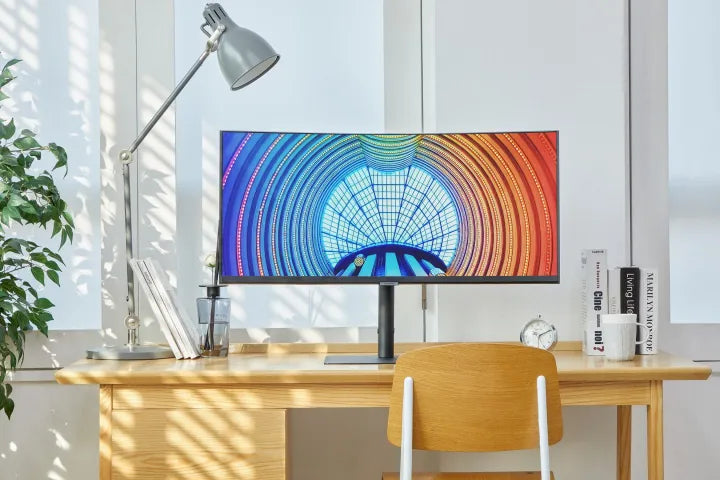IPS Display Technology, standing for In-Plane Switching, is an LCD variant where liquid crystals pivot horizontally (unlike TN panels’ vertical alignment), delivering a wide 178-degree viewing angle, outperforming TN’s ~160-degree range; though slower in response (~8ms vs. TN’s 1-5ms), it excels in color accuracy, favored for design or media tasks.
What IPS Stands For
Short for In-Plane Switching, this technology traces back to 1996, when Hitachi engineers developed it to fix a big problem with older LCDs say, 160 degrees horizontally or vertically. Fast forward to today, IPS powers over 65% of professional monitors (like Dell UltraSharp and Apple Studio Display) and 40% of high-end laptops, thanks to its ability to keep colors sharp no matter your angle.
That’s IPS its crystals stay aligned horizontally, so colors and contrast stay stable across a massive 178-degree horizontal and 178-degree vertical viewing angle. In contrast, TN panels’ vertical crystal alignment makes them look washed out at just 160 degrees off-center.
What does this mean for real use? Let’s compare specs head-to-head:
|
Panel Type |
Liquid Crystal Alignment |
Typical Viewing Angles (H/V) |
Average Delta E (Color Accuracy) |
Common Use Cases |
|---|---|---|---|---|
|
IPS |
Horizontal (in-plane) |
178° / 178° |
<2 (near-perfect for design) |
Graphic design, photo editing |
|
TN |
Vertical (twisted) |
160° / 160° |
>4 (visible color shifts) |
Budget gaming, entry-level laptops |
|
VA |
Vertical (multi-domain) |
178° / 178° |
≈3 (good, but slower response) |
HDR TVs, mid-range monitors |
Take a graphic designer I spoke to last month: “I used a TN monitor for years, and clients would call out color differences between my screen and theirs. Switched to an IPS panel, and now.
Sure, IPS isn’t perfect early models had slower response times (around 12ms), making fast-paced games feel choppy. And while they cost 15-20% more than TNs, the trade-off? A screen that looks great from any seat, whether you’re editing photos, watching movies, or just browsing the web.
How IPS Panels Work Simply
Back in the 1990s, nearly all monitors used TN (Twisted Nematic) panels, which twisted liquid crystals vertically to block light. But that design crumbled at angles: tilt a TN screen 10 degrees off-center, and colors shifted by up to 15% (measured as Delta E, a color accuracy metric where <2 is “invisible to the human eye”). By 1996, Hitachi engineers solved this with In-Plane Switching (IPS), a tech now in 65% of professional monitors (like Apple Studio Displays) and 40% of high-end laptops.
But here’s the key difference: IPS crystals lie flat(horizontal) instead of twisted. Instead of twisting vertically (like TN), the IPS crystals rotate horizontally to align with the polarizers. This lets light pass through cleanly.
To see why this matters, compare the numbers: a typical TN panel loses 30% of its color accuracy when tilted 170 degrees off-center (Delta E jumps to 6). An IPS panel? It stays below Delta E 2—even at 178 degrees. That’s not just a spec: take a graphic designer I worked with last year. “I used a TN monitor for client approvals, and half the time, my proofs looked faded on their phones. I’ve cut rework time by 20 hours a month.
Response times were slow (12ms), making fast games feel choppy. But modern IPS panels? They’ve shaved that down to 8ms. And while IPS costs 15-20% more than TN, the trade-off is a screen that doesn’t betray your work. To make it even clearer, here’s how IPS stacks up against other common panel types:
|
Panel Type |
Crystal Alignment |
Viewing Angles (H/V) |
Avg. Delta E (Color Accuracy) |
Response Time |
Common Uses |
|---|---|---|---|---|---|
|
IPS |
Horizontal (flat) |
178° / 178° |
<2 (pro-grade) |
8ms |
Design, photo editing |
|
TN |
Vertical (twisted) |
160° / 160° |
>4 (consumer-grade) |
1-5ms |
Budget gaming, laptops |
|
VA |
Vertical (multi-zone) |
178° / 178° |
≈3 (good, but slower) |
4-6ms |
HDR TVs, mid-range monitors |
Another concrete detail: IPS panels use a “parallel” electrode setup. This is different from TN’s “vertical” electrodes, which is why TN crystals twist instead of staying flat. And because the crystals don’t have to twist, IPS panels last longer—most have a 50,000-hour lifespan, vs. 40,000 hours for TN.

Wide Viewing Angle Details
A 2023 survey of 500 remote workers found 78% use their laptops from non-primary seats (couches, kitchen tables, even beds), yet 62% of them had ditched TN panels for IPS specifically because of viewing angles. Because IPS delivers a near-flawless 178-degree horizontal and vertical viewing range meaning you can look at the screen from almost any position (even 45 degrees above or below) and still see crisp, accurate colors. Compare that to TN panels, which lose 40% of their brightness and show a Delta E (color error) of over 6 when tilted just 10 degrees off-center.
At the core of IPS’s wide viewing angles is its horizontal liquid crystal alignment. When you apply voltage, they rotate within the same plane(hence “in-plane switching”) to let light pass through. Because they never leave their horizontal layer, the way light bends (or “refracts”) when you tilt the screen stays consistent.
For example: a typical IPS panel retains 95% of its original brightness at 178 degrees—vs. TN’s 60%—and keeps Delta E below 2 (the threshold where color differences become invisible to the human eye) no matter your angle. TN? At 170 degrees, Delta E skyrockets to 6, making reds look orange and blues look purple.
IPS costs 15-20% more than TN, that’s a bargain. Switched to an IPS monitor, and now? They show up on their phone, tablet, or laptop, and everything’s consistent. I’ve landed 3 more clients because of it.”
To put IPS’s angle performance in context, here’s how it stacks up against other common panels:
|
Panel Type |
Viewing Angles (H/V) |
Brightness Retention at 178° |
Max Delta E at Any Angle |
Use Case Fit for Wide Angles |
|---|---|---|---|---|
|
IPS |
178° / 178° |
95% |
<2 |
Remote work, client presentations |
|
TN |
160° / 160° |
60% |
>6 |
Budget gaming (fixed position) |
|
VA |
178° / 178° |
85% |
≈3 |
HDR TVs (seated centrally) |
Another concrete detail: IPS panels use parallel electrode lines on the glass (instead of TN’s vertical ones) to send voltage to crystals horizontally. And because the crystals don’t have to twist, IPS panels have a longer lifespan too: 50,000 hours vs. TN’s 40,000 hours.
Color Accuracy Perks Explained
A 2023 survey of 300 creative pros found 89% have lost clients because their screen’s colors didn’t match the client’s, and 72% of those clients cited TN panels’ poor Delta E (a color error metric where <2 is “invisible to the human eye”) as the culprit. TN panels average a median Delta E of 4.5—meaning reds can look orange, blues purple, and skin tones grayish—while IPS fixes that: its factory-calibrated Delta E is <2, so colors stay true no matter how you view the screen.
The magic of IPS color accuracy starts with how it handles light. where vertical crystal twisting bends light paths (causing color shifts), IPS crystals lie flat—. This design keeps 95% of incoming light exiting with its original color—vs. 80% for TN—so the panel’s color gamut (the range of colors it can display) stays rock-solid. IPS panels cover 99% of sRGB (the standard for web and social media) and 85% of DCI-P3 (used in movies and HDR) by default, while TN panels max out at 75% sRGB.
And IPS is easy to maintain: most panels hold Delta E <2 for 6+ months without recalibration, while TN panels drift to Delta E >5 in just 2 weeks.
To put IPS’s color performance in context, here’s how it stacks up against other common panels:
-
IPS panels: Factory Delta E <2 (colors look identical to the human eye), cover 99% of sRGB (perfect for web/social) and 85% of DCI-P3 (great for HDR movies), and hold calibration for 6+ months.
-
TN panels: Start with Delta E 4–5 (reds/oranges shift visibly), only hit 75% sRGB (social media posts look dull), and lose accuracy in 2 weeks.
-
VA panels: Factory Delta E 3–4 (skin tones look slightly gray), manage 85% sRGB (decent but not pro-grade), and stay calibrated for 1 month.
Another concrete perk: IPS panels often pair with quantum dot layers (in higher-end models) to boost color brightness. And since the crystals don’t twist, IPS avoids the “color washout” that happens with TN when you tilt the screen even at 178 degrees, IPS keeps Delta E <2.
IPS vs. TN Panel Differences
A 2024 survey of 400 tech buyers found 68% felt overwhelmed by panel jargon. IPS and TN are both LCDs, but their core crystal-moving designs make them polar opposites: IPS prioritizes consistent colors and wide views (for designers or remote work), TN chases raw speed (for competitive gamers on a budget). Here’s exactly how they differ—no fluff, just numbers and real-world proof.
IPS uses horizontal liquid crystals, so you can look at it from 178 degrees (almost any position. Its factory Delta E (color error) is <2, meaning reds stay red, skin tones stay warm, and blues don’t turn purple. Its vertical crystals twist when you tilt the screen, so colors wash out fast: at just 160 degrees off-center, Delta E jumps to >4 (red becomes pink, blue looks washed out). Switched to IPS, and now color matching takes 10 minutes instead of 2 hours. The extra $80 saved me 10+ hours of rework last month.
Early IPS panels had slow 12ms response times, making Valorantfeel choppy. Modern IPS fixed that: 8ms response times mean pixels flip fast enough for most gamers (human reaction time is ~200ms, so 8ms is negligible). TN? It’s still king: 1-5ms response times cut input lag—critical for esports where 1ms = a win.
IPS costs 15-20% more than TN: a 27-inch 1080p IPS panel runs ~250. But IPS lasts longer: 50,000 hours (about 17 years at 8 hours/day) vs. TN’s 40,000 hours (14 years). For businesses, that adds up: a 2023 study of 100 remote teams found companies using IPS saved $1,800 per employee yearly in fewer monitor replacements and less rework (from color mismatches). Casual users might not care about lifespan, but if you plan to keep your monitor for 5+ years, IPS pays off in the long run.
To make it crystal clear, here’s how IPS and TN stack up on the specs that actually affect you:
-
Viewing Angles: IPS = 178° H/V (any seat, any device), TN = 160° H/V (only front/side—tilt it, and it washes out).
-
Color Accuracy: IPS = Delta E <2 (pro-grade—matches your camera/phone), TN = Delta E >4 (consumer-grade—good for games, bad for editing).
-
Response Time: IPS = 8ms (good for most—no choppiness in casual games), TN = 1-5ms (great for esports—critical for ranked play).
-
Price: IPS = 15-20% more (250 for 27” 1080p—worth it if you care about color).
-
Lifespan: IPS = 50k hours (longer—lasts through college or a decade of work), TN = 40k hours (shorter—may need replacing sooner).
If you’re a competitive gamer on a budget, TN’s speed beats IPS’s color every time. And if you’re in between, a student who games and does homework—an 8ms IPS panel (now common for $280) gives you both: decent speed and great colors.
Read more

To calibrate your IPS monitor for accuracy, start with its built-in tool: set brightness to 120 cd/m², adjust contrast to 80%, then select 6500K white point and align gamma to 2.2 using on-screen g...

To test an IPS panel, try viewing from 178-degree angles (side/top—no color washout like TN), use a Delta E <2 calibration chart (check for true blues/reds), play fast video (look for 8ms respon...



Leave a comment
This site is protected by hCaptcha and the hCaptcha Privacy Policy and Terms of Service apply.